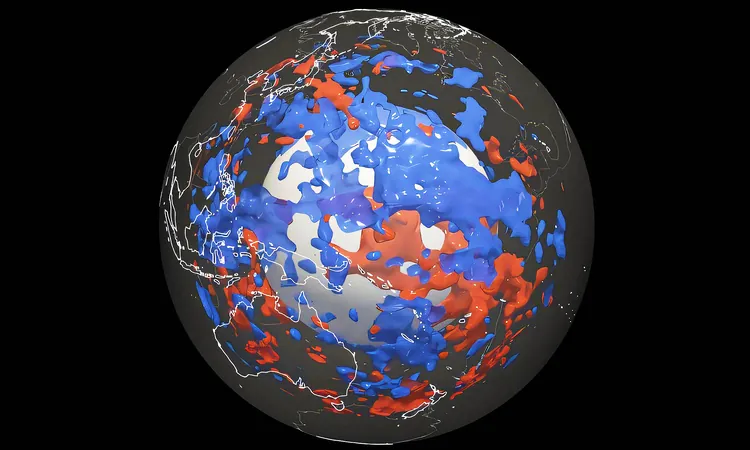
Mysterious Ancient Structures Unveiled Beneath the Pacific Ocean's Depths
2025-01-14
Author: Ying
Recent advancements in geological research have unveiled startling new evidence suggesting that the Earth’s mantle is home to previously unknown structures that could redefine our understanding of tectonic processes.
Instead of the expected layered composition resembling a 'layered cake,' scientists are discovering complexities that challenge long-held assumptions about the Earth's interior.
What Lies Beneath: A Closer Look at Earth's Mantle
The mantle, a colossal layer of rock stretching approximately 1,800 miles (2,900 kilometers) deep, comprises around 84% of Earth’s volume.
Primarily made up of silicate minerals rich in iron and magnesium, the mantle is mostly solid yet behaves like a slow-flowing fluid over geological timescales, driving the movement of tectonic plates and influencing surface phenomena such as earthquakes and volcanic activity.
Researchers have long understood the mantle's convective processes, where heat from the core prompts hot material to rise, cool near the surface, and descend, thus reshaping the Earth's surface continuously.
Discovering Hidden Anomalies
The application of full-waveform inversion in the research of the lower mantle revealed unexpected pockets that seem to be remnants of tectonic plates in areas devoid of historical subduction, particularly under the western Pacific Ocean.
This discovery has significant implications, as it indicates that these anomalies are far more common than previously thought, challenging geoscientists' understanding of where old tectonic plates reside.
PhD candidate Thomas Schouten from ETH Zurich led a collaborative research effort with specialists from the California Institute of Technology.
Their findings suggest these structures may not be mere fragments of plates but rather possibly ancient, silica-rich material enhanced by billions of years of geological processes.
The Mysteries of the Mantle: What Do These Anomalies Mean?
Scientists are now pondering the nature of these unidentified structures.
Some hypotheses propose that they could be remnants from the early mantle while others suggest they may represent iron-rich accumulations that have shifted deep within the Earth over unimaginable time scales.
This newly revealed diversity in the mantle's composition could lead to a reevaluation of fundamental principles in earth sciences, including how heat is distributed and how tectonic plates operate.
As the research progresses, scientists are keen to refine their methods and explore additional data sources.
New technologies, including advanced electromagnetic sensing and mineral physics experiments, could shed light on whether these anomalies originated from primordial mantle material, recycled ocean crust, or some other source altogether.
A Shifting Paradigm in Plate Tectonics?
The implications of discovering more zones like these in Earth's depths could necessitate substantial changes in existing theories regarding mantle convection and the development of hotspots.
A reevaluation of how plate fragments evolve and migrate could lead to enriching the narrative of plate tectonics with new insights.
The journey into the hidden layers of our planet is ongoing, and with advancements in supercomputing, researchers are poised to analyze increasingly larger datasets.
This approach aims to provide clearer images of the lower mantle and its enigmatic features, ultimately reconciling debates over the true nature of these structures.
In summary, as researchers like Schouten demonstrate, expanding our vision to consider all available evidence is crucial in unveiling the underlying complexity of our dynamic planet.


 Brasil (PT)
Brasil (PT)
 Canada (EN)
Canada (EN)
 Chile (ES)
Chile (ES)
 Česko (CS)
Česko (CS)
 대한민국 (KO)
대한민국 (KO)
 España (ES)
España (ES)
 France (FR)
France (FR)
 Hong Kong (EN)
Hong Kong (EN)
 Italia (IT)
Italia (IT)
 日本 (JA)
日本 (JA)
 Magyarország (HU)
Magyarország (HU)
 Norge (NO)
Norge (NO)
 Polska (PL)
Polska (PL)
 Schweiz (DE)
Schweiz (DE)
 Singapore (EN)
Singapore (EN)
 Sverige (SV)
Sverige (SV)
 Suomi (FI)
Suomi (FI)
 Türkiye (TR)
Türkiye (TR)
 الإمارات العربية المتحدة (AR)
الإمارات العربية المتحدة (AR)